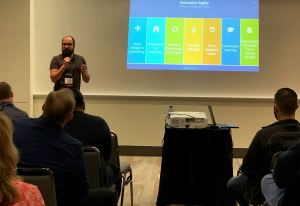Designing Organizations for Long-Term Success and Prosperity: A Four-Step Process
Original post here.
Due to uncertainties and pressures related to global inflation, regulatory scrutiny, the global supply chain recovery, cryptocurrency firms’ bankruptcy, national sovereignty, and among others, finance sector firms and businesses of all sizes have been facing unprecedented challenges this year. Furthermore, it seems that we will all have a bumpy road ahead of us.
These challenges and uncertainties are complex and ever-evolving, making it difficult for organizations to navigate them successfully and achieve long-term business success. Moreover, considering the current market dynamics/challenges, it is crucial for organizations to develop consistent multi-disciplinary strategies and organizational design capabilities to support business growth, enable modern technologies, M&A integration efforts, and overall continuous improvement endeavors.
In this post, I have covered and emphasized the significance of modern organizational design capabilities and also described a four-step process for designing effective organizations that can adapt to such challenges.
Why are multi-disciplinary strategies and organization design capabilities crucial for business success?
Adaptability — In today’s fast-changing business environment, organizations must adapt quickly to new challenges and opportunities. An effective organizational design and flexible operating models allow organizations to respond to changes in the market, customer demands, and technology.
Agility — Agility to make quick and effective decisions. Effective strategies and organization design allows organizations to make quick decisions by decentralizing decision-making and giving more autonomy to employees.
Innovation: Innovation is essential to long-term success. An effective organizational design encourages innovation by creating an environment that fosters creativity, experimentation, and risk-taking.
Employee engagement — An effective organization design aligns the goals of the organization with the goals of its employees. This alignment leads to higher employee engagement, satisfaction, and talent retention.
Based on that and also recent experiences, I have seen there is a four-step process that is common across the industry for designing effective and competitive organizations:
- Define the strategic goals and objectives: The first step in designing an effective organization is to define the strategic goals and objectives which includes identifying the core business and technology competencies of the organization, regulatory requirements and the markets it operates.
- Design the organizational structure and operating models: The second step is to design the organizational structure and respective operating mode and governance guardrails. It includes defining the roles and responsibilities of each employee and proposed constructs, determining the reporting structure, identifying the key decision-makers and defining control objectives to address regulatory requirements.
- Define the systems and processes: The third step is to define the systems and processes that will support the organizational structure which includes the communication and collaboration processes, the performance management systems, and the training and development programs.
- Monitor, Adjust and Sustain: The final step is to monitor and adjust the strategy and organization design as needed via Key Performance Indicators. It contemplates reviewing the structure, systems, and processes to ensure that these artifacts and practices are aligned with the strategic goals and objectives of the organization.
The four-step process is a proven method for designing effective organizations. Ideally, these steps are executed in a sequence. However, the reality is that each organization is unique and requires a customizable approach.
These capabilities are critical for the long-term success of any organization especially ones in the finance sector. Laser focus on creating an effective multi-disciplinary strategy and organization design capabilities that are adaptable, agile, innovative, and aligned with the business, technologies and employees’ goals.
Hope these thoughts and steps help! As a reminder, take these steps with a “grain of salt” and use them as a simple guideline along the way.















